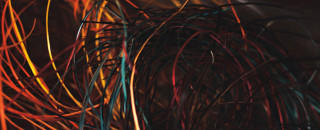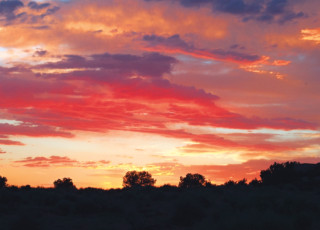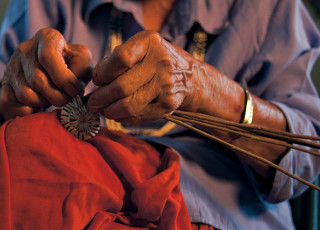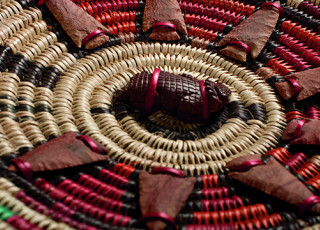The Art of Making Diné Baskets
By Riley Black
Art is not simply an expression. Art is also process, and there may be no better example than how Diné (Navajo) weavers make baskets.
All baskets start with the same material, notes weaver Alicia Nelson - sumac. But not just any sumac will do. Sumac has to be gathered at the right time of year, so that the plant is not too fragile, and each piece is collected with care. This is part of the art, traveling, searching, and collecting, involving both gratitude and skill.
The tools used to turn that sumac into a gorgeous, meaningful basket might seem simple. A sharp knife, a small awl, and a tin can lid poked with holes are all common tools used to make baskets. Dyes are important, too. Traditional dyes have been made with charcoal, ochre, mountain mahogany, and other naturally-occuring pigments. Many baskets today are made with synthetic dyes that create even more vivid colors, expanding the possible range of colors and expressions in the baskets. All of these selections - from just the right knife to the shade of dye - are parts of the art.
What follows isn't just a matter of technique. Diné culture is literally woven into the process, particularly the herringbone stich that tops most baskets. "Sacred stories," the Navajo Basket Explorer points out, "tell that when Asdzą́ą́ Nádleehé (Changing Woman) wove the first basket, she wasn’t sure how to finish it. Talking God appeared and gave her a sprig of juniper. The overlapping pattern of the juniper leaves gave Changing Woman the inspiration she was seeking for her basket finish."
Consider this the next time you look at a Diné basket. The finished piece is part of a greater art that runs much deeper than you might be able to immediately perceive, from the time of year the sumac was harvested to the stories and inspirations told through the dyed form. Each part becomes something greater, not just one story but many brought together.
Riley Black is the author of Skeleton Keys, My Beloved Brontosaurus, Prehistoric Predators, and a science writer for the Natural History Museum of Utah, a part of the University of Utah in Salt Lake City. Our mission is to illuminate the natural world and the place of humans within it. In addition to housing outstanding exhibits for the public, NHMU is a research museum. Learn more.



